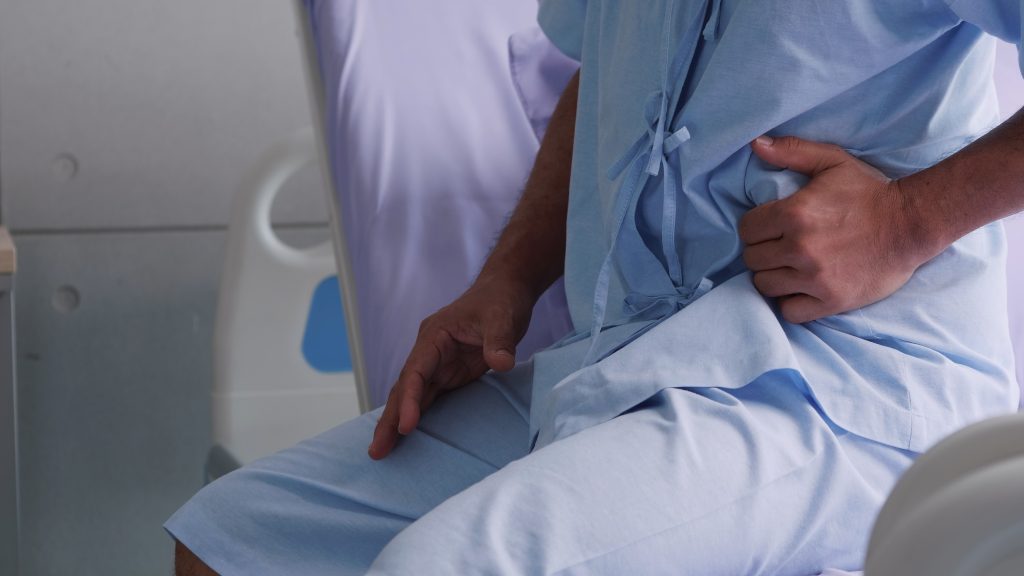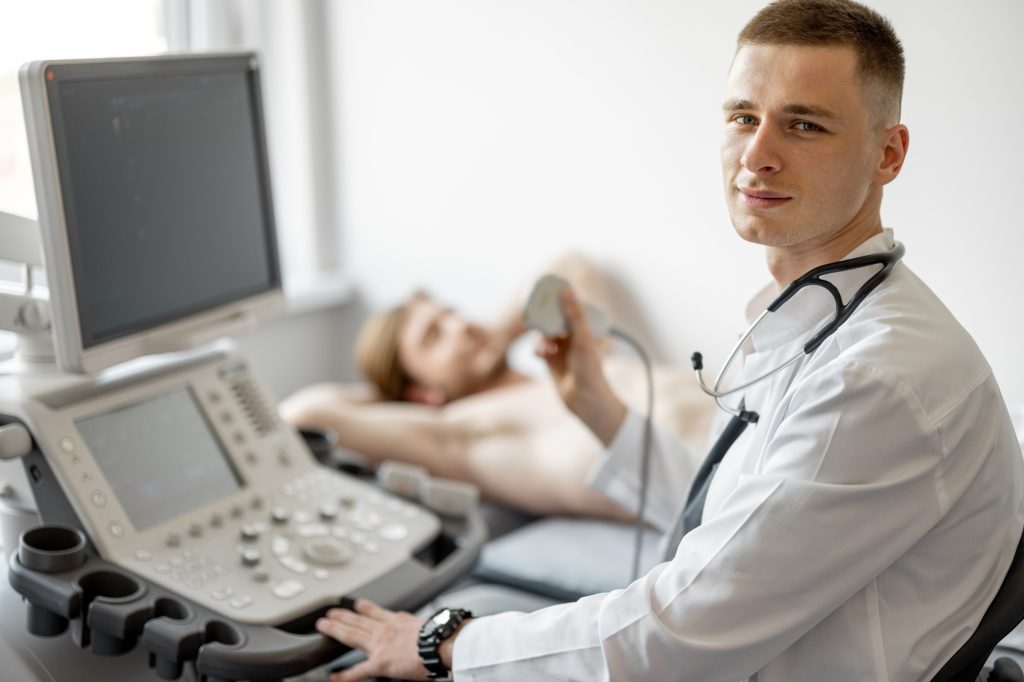Symptoms of Ventral Hernia
Depending on the type of hernia, symptoms may vary, but generally include:
- A visible lump in the affected area, which may increase with strain and decrease at rest.
- Abdominal pain or discomfort, especially when exercising, coughing, or standing for long periods.
- A sensation of pressure in the abdominal wall.
- Difficulty performing daily activities due to pain.
- Redness, warmth, and swelling in the herniated area in more severe cases.
- Nausea and vomiting if the hernia is causing intestinal obstruction.
If a hernia is not treated in time, it may lead to strangulation, a complication that occurs when the herniated tissue becomes trapped and loses its blood supply, requiring urgent medical attention and immediate surgery.
Causes and Risk Factors of Ventral Hernia
Ventral hernias can develop due to various factors, including:
- Genetic predisposition: having a family history increases the risk.
- Intense physical strain: lifting heavy weights incorrectly or excessive physical activity can weaken the abdominal wall.
- Obesity: excess weight puts pressure on the abdominal muscles and promotes hernia formation.
- Pregnancy: changes in the abdominal wall may promote hernia formation due to muscle stretching.
- Previous surgeries: surgical incisions can weaken the abdominal muscles and facilitate postoperative hernias.
- Chronic cough or constipation, which increase abdominal pressure and may weaken the muscle wall over time.
- Abdominal trauma, which can damage the muscle wall and promote hernia formation.
Diagnosis of Ventral Hernia
At Centro Pad, we use state-of-the-art equipment to accurately diagnose ventral hernias. The most commonly used tests include:
- Physical examination, where the specialist palpates the affected area and assesses the size of the hernia.
- Abdominal ultrasound, useful for detecting small hernias or in overweight patients.
- Computed tomography (CT) or magnetic resonance imaging (MRI), recommended for complex cases or less visible hernias, as well as for precise surgical planning.
Early diagnosis allows for the definition of the most appropriate treatment and the prevention of future complications.

Advanced Treatments for Ventral Hernia in Moncloa-Aravaca
At Centro Pad, we offer the best options to treat ventral hernia using high-tech procedures, ensuring faster recovery and less postoperative discomfort.
Robotic Surgery for Ventral Hernia
Robotic surgery, performed with systems like Da Vinci, is one of the most advanced techniques, offering benefits such as:
- Greater precision and less damage to surrounding tissues.
- Less postoperative pain and reduced need for painkillers.
- Faster recovery and lower risk of complications.
- Smaller scars and improved cosmetic results.
- Increased safety in complex procedures.
Laparoscopic Surgery for Ventral Hernia
Laparoscopic surgery is another minimally invasive option that allows hernia repair through small incisions. Its advantages include:
- Less postoperative pain compared to open surgery.
- Lower risk of infections and complications.
- Quicker return to normal activities.
- Reduced risk of postoperative internal adhesions.
Other Minimally Invasive Techniques
- Tension-free mesh repair, which reinforces the abdominal wall and helps prevent recurrence, allowing for quicker recovery and less discomfort.
- Outpatient surgery, in selected cases, allowing patients to return home the same day as the procedure.



